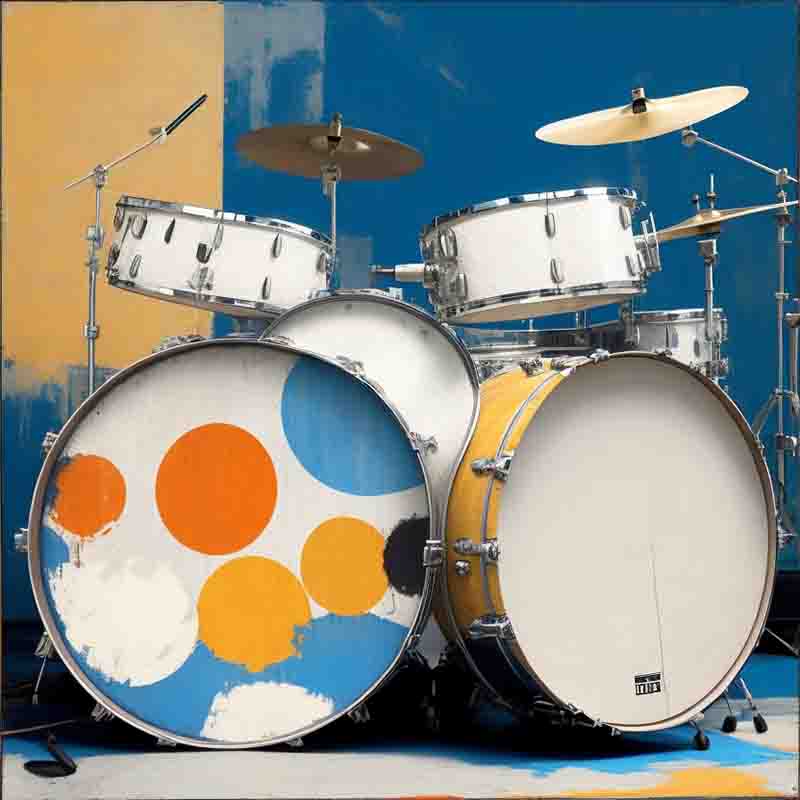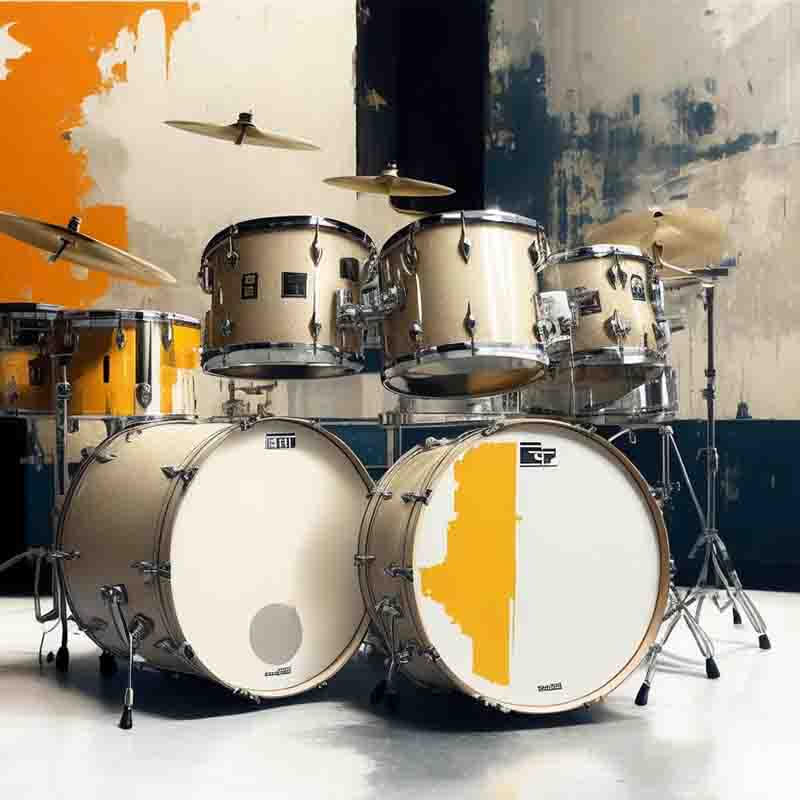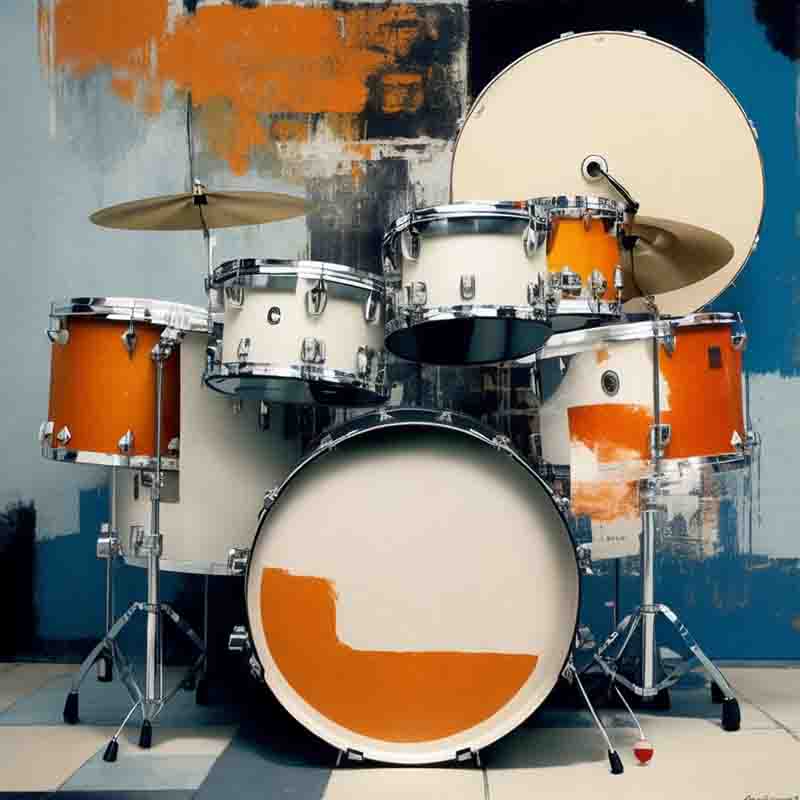The Rhythmic Pulse of the Four on the Floor Groove
In the pulsating universe of dance music, a rhythmic beat pattern known as “four-on-the-floor” has served as a relentless, driving force. This groove, marked by a steady, uniformly accented rhythm in 4/4 time where the bass drum is hit on every beat, became a defining feature of disco and electronic dance music.

The iconic Four-to-the-Floor beat has been the pulse of countless dance songs and have shaped the music landscape across genres for decades. The 4/4 beat is more than just a rhythm; it's a cultural phenomenon, a testament to music's power to inspire, unite, and uplift.
The "four to the floor" beat is a rhythmic pattern commonly found in dance music, characterized by a kick drum hitting on each of the four beats within a 4/4 time signature.
Four-on-the-Floor: A Dancefloor Staple
Imagine a bass drum hitting consistently on every beat – one, two, three, four – that's the essence of this rhythm.
✅ Subscribe and become a channel member:
In contrast to the propulsive motorik beat in which the kick drum is playing eighth notes, the Four-to-the-Floor beat is a rhythmic pattern characterized by a steady and unchanging kick drum on every quarter note of a musical measure.
This creates a relentless and infectious groove that keeps dancers moving in sync with the music's heartbeat.
The 4/4 rhythm forms the foundation of various musical styles, uniting music lovers on dance floors worldwide.
Legendary drummer Earl Young pioneered the four-on-the-floor beat style by turning the classic Motown beat upside down, switching the fourth notes commonly played on the snare onto the kick drum.
This provided creative flexibility in the use of the hi-hat. The most prominent of these is the opening of the hi-hat cymbals to the accents which would later become the hallmark of house music.
The popularity of Four-to-the-Floor Beat soon reached the Mediterranean party island of Ibiza. It was here that the local DJs developed their very own signature style, which they dubbed the Balearic Beat.
Today, numerous styles of electronic dance music incorporate this beat as an essential part of their rhythmic structure.
The phrase “four-on-the-floor” gained prominence during the disco era of the 1970s, with every quarter note being played on the pedal-operated kick drum.
The Unstoppable Four-on-the-Floor Groove

The iconic Four-to-the-Floor beat has been the pulse of countless dance songs and have shaped the music landscape across genres for decades. The 4/4 beat is more than just a rhythm; it's a cultural phenomenon, a testament to music's power to inspire, unite, and uplift.
The Four-to-the-Floor beat, often abbreviated as 4/4, is far more than a mere musical rhythm; it's a rhythmic pattern that has the remarkable power to move the body, stir the soul, and create moments of pure musical ecstasy.
In the field of popular music, there are few elements that have been as consistent and universally embraced as the four-to-the-floor beat.
It's a rhythmic phenomenon that has not only dominated dance music, but also spans both genres and musical eras leaving an indelible mark on the global musical landscape.
At its core, the Four-to-the-Floor beat is elegantly simple yet profoundly effective.
It's characterized by the consistent thumping of the kick drum on every quarter note of a musical measure.
This unchanging and steady pulse forms the rhythmic foundation upon which countless dance tracks and anthems have been built.
From the discotheques of the 1970s to the massive music festivals of the 21st century, this rhythmic pattern has been the heartbeat of dance culture, inviting people to move, groove, and lose themselves in the music.
The Role of Four-to-the-Floor Beat

The four-to-the-floor beat is not just a rhythmic pattern, but a cultural phenomenon that has become ingrained in the very essence of nightlife and dance.
Four-to-the-Floor Beat Timeline
The Four-to-the-Floor beat has had a profound impact on dance culture, shaping dance styles and club experiences around the world.
-
Origin (1970s): The "Four-to-the-Floor Beat" originated in the disco era of the 1970s. It was characterized by a steady and consistent kick drum on every quarter note, creating a driving rhythm ideal for dancing.
-
1980s - Rise in Dance Music: During the 1980s, the Four-to-the-Floor beat gained popularity beyond disco and found its way into various electronic dance music genres, such as house and techno. This era marked the beat's transition into electronic music.
-
1990s - Electronic Dance Music (EDM): The 1990s witnessed the explosion of EDM, and the Four-to-the-Floor beat became a defining feature of this genre. Iconic tracks like "Sandstorm" by Darude and "Children" by Robert Miles exemplified its use.
-
2000s - Further Genre Diversification: In the 2000s, the Four-to-the-Floor beat continued to diversify into subgenres like trance, progressive house, and deep house. Producers experimented with variations and added unique elements to the beat.
-
2010s - Integration into Pop: In the 2010s, the beat made its way into mainstream pop music. Artists incorporated it into their chart-topping hits, blurring the lines between electronic dance music and mainstream pop.
-
2020s: The Four-to-the-Floor beat remains a staple in electronic and dance music, but its influence has transcended these genres. It can be found in hip-hop, indie, and even rock music, showcasing its versatility and enduring appeal.
The Four-to-the-Floor beat's influence extends to today's music production techniques, with producers using it as a foundation for creating catchy and danceable tracks. Its simplicity and effectiveness make it a valuable tool for modern music producers.
Crafting the Perfect Four-on-the-Floor Beat

The Four-to-the-Floor beat's infectious rhythm adds an undeniable danceability to these songs, making them instant classics.
The Four-to-the-Floor beat's versatility knows no bounds. It has left its mark on dance-pop anthems, rock classics, and even hip-hop tracks.
Behind every great Four-to-the-Floor beat is a meticulous production process.
Musicians and producers carefully select kick drum sounds, experiment with patterns, and layer percussion to create the perfect rhythmic foundation.
The Four-to-the-Floor beat is, without a doubt, the heartbeat of dance music and club culture.
Its steady rhythm and groove have the power to unite people on the dancefloor like nothing else.
The Four-to-the-Floor beat is the sonic embodiment of the dancefloor's communal spirit.
Its role in dance music and club culture is nothing short of iconic, and it continues to inspire and unite generations of music lovers worldwide.
Enduring Appeal of the Four-to-the-Floor beat

As the years passed, the Four-to-the-Floor beat didn't fade away with disco; instead, it evolved and adapted. In the 1980s, it found its way into electronic dance music (EDM), particularly in the emerging house and techno scenes. Producers and DJs embraced the beat's driving energy, and it became a staple in the electronic music landscape.
Famous "four on the floor" tracks
-
"Miss You" by The Rolling Stones: Taken from their 1978 album Some Girls this Four on the Floor Masterpiece demonstrates the brilliance of one of rock's best drummers Charlie Watts. His perfectly delivered groove even conquered listeners who had little appreciation for disco at that time.
-
“Superstition” by Stevie Wonder: During a collaboration in 1972 with Jeff Beck, Stevie Wonder created this musical gem. Differences of opinion existed over the song credits and it was believed that the riff was Jeff Beck's. But in a later interview it was revealed that Jeff Beck was responsible for the "four to the floor" drum rhythm.
-
“Stayin' Alive” by The Bee Gees: The essential 1977 disco song transformed the Bee Gees from singer-songwriters to disco megastars
-
"Another Brick in the Wall" by Pink Floyd: They won't admit it, but in 1979 Pink Floyd also jumped on the disco bandwagon.
-
"Heart of Glass" by Blondie: Released in 1978, this dance track was performed by one of the best drummers of his generation, Clem Burke.
Creating Your Own Four-to-the-Floor Groove

The kick drum hits on the first beat of every bar, followed by a consistent rhythm on the second, third, and fourth beats. The result is a driving and relentless groove that forms the backbone of countless dance tracks.
For music producers, crafting a unique and captivating Four-to-the-Floor beat is both an art and a technical skill.
It requires a deep understanding of rhythm, sound design, and arrangement. Here are some essential tips for creating your own Four-to-the-Floor groove
-
Start with the Right Kick Drum: The kick drum is the heartbeat of your beat, so choose a kick that suits the mood of your track. Consider its tone, pitch, and character.
-
Layer Percussion Elements: While the core of a Four-to-the-Floor beat is the kick drum, don't be afraid to layer other percussion elements to add complexity. Experiment with claps, snares, hi-hats, shakers, and additional kick layers to create a more intricate rhythm pattern. The arrangement of these elements can significantly impact the groove.
-
Experiment with Timing: Variations in the timing of your drum hits can breathe life into your beat. Try introducing subtle swing or shuffle to create an organic feel. Adjust the velocity of individual drum hits to add dynamics and groove to your rhythm.
-
Keep It Groovy: Groove is the soul of the Four-to-the-Floor beat. Pay attention to the interplay between all musical elements.
Four-to-the-Floor groove is as much about intuition and creativity as it is about technical expertise.
It's about crafting a beat that not only makes people move but also communicates the emotions and energy of music.
Four on the Floor: FAQ
Are you curious about music, art, technology, fashion, lifestyle, and beer?
If so, then you need to subscribe to the free Likewolf newsletter.
100% privacy. When you sign up, we'll keep you posted.
Dive Deeper into the Rhythm
Capture the Passion and Energy of House Music
